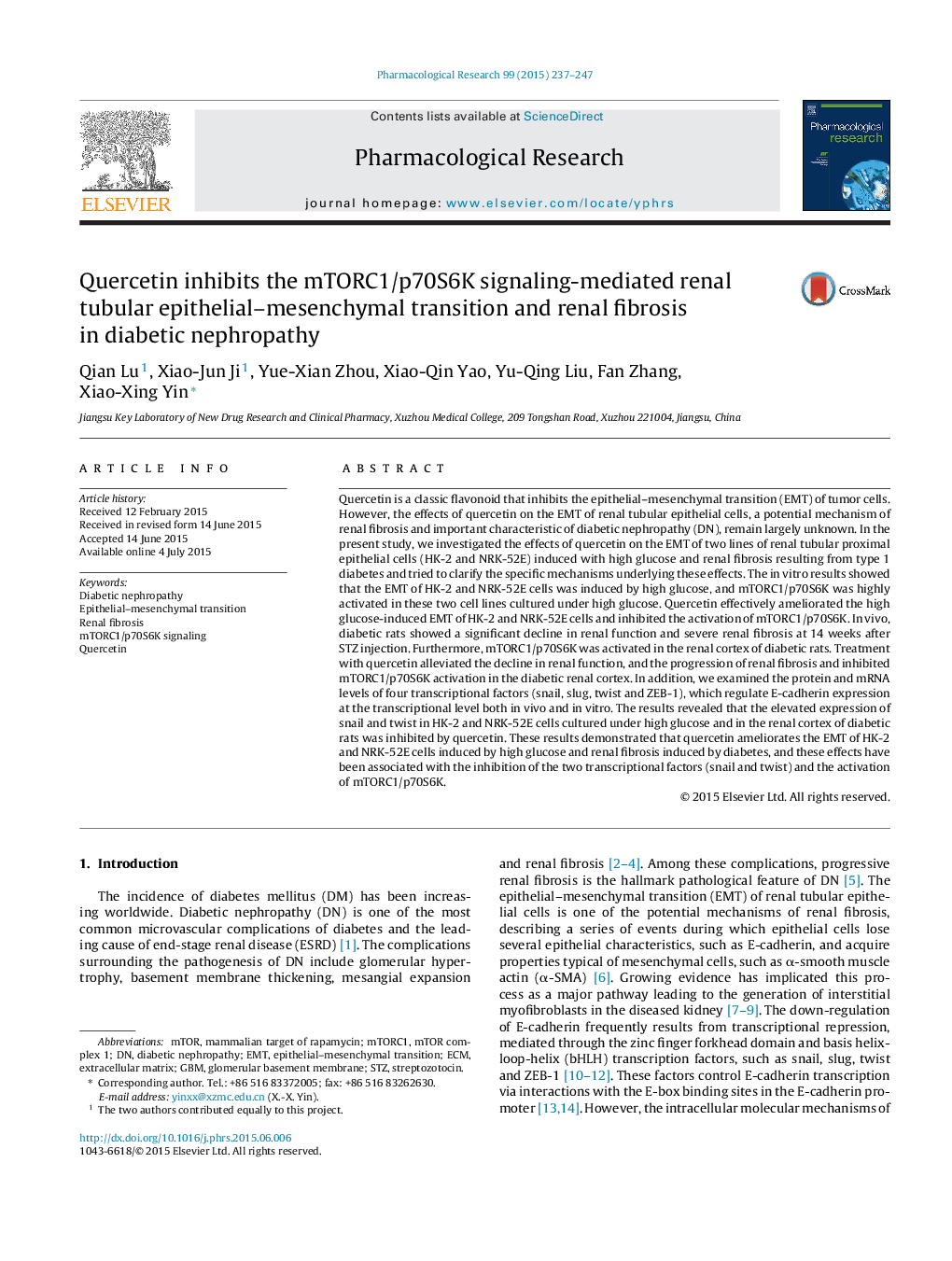| کد مقاله | کد نشریه | سال انتشار | مقاله انگلیسی | نسخه تمام متن |
|---|---|---|---|---|
| 5843757 | 1560841 | 2015 | 11 صفحه PDF | دانلود رایگان |

Quercetin is a classic flavonoid that inhibits the epithelial-mesenchymal transition (EMT) of tumor cells. However, the effects of quercetin on the EMT of renal tubular epithelial cells, a potential mechanism of renal fibrosis and important characteristic of diabetic nephropathy (DN), remain largely unknown. In the present study, we investigated the effects of quercetin on the EMT of two lines of renal tubular proximal epithelial cells (HK-2 and NRK-52E) induced with high glucose and renal fibrosis resulting from type 1 diabetes and tried to clarify the specific mechanisms underlying these effects. The in vitro results showed that the EMT of HK-2 and NRK-52E cells was induced by high glucose, and mTORC1/p70S6K was highly activated in these two cell lines cultured under high glucose. Quercetin effectively ameliorated the high glucose-induced EMT of HK-2 and NRK-52E cells and inhibited the activation of mTORC1/p70S6K. In vivo, diabetic rats showed a significant decline in renal function and severe renal fibrosis at 14 weeks after STZ injection. Furthermore, mTORC1/p70S6K was activated in the renal cortex of diabetic rats. Treatment with quercetin alleviated the decline in renal function, and the progression of renal fibrosis and inhibited mTORC1/p70S6K activation in the diabetic renal cortex. In addition, we examined the protein and mRNA levels of four transcriptional factors (snail, slug, twist and ZEB-1), which regulate E-cadherin expression at the transcriptional level both in vivo and in vitro. The results revealed that the elevated expression of snail and twist in HK-2 and NRK-52E cells cultured under high glucose and in the renal cortex of diabetic rats was inhibited by quercetin. These results demonstrated that quercetin ameliorates the EMT of HK-2 and NRK-52E cells induced by high glucose and renal fibrosis induced by diabetes, and these effects have been associated with the inhibition of the two transcriptional factors (snail and twist) and the activation of mTORC1/p70S6K.
191
Journal: Pharmacological Research - Volume 99, September 2015, Pages 237-247